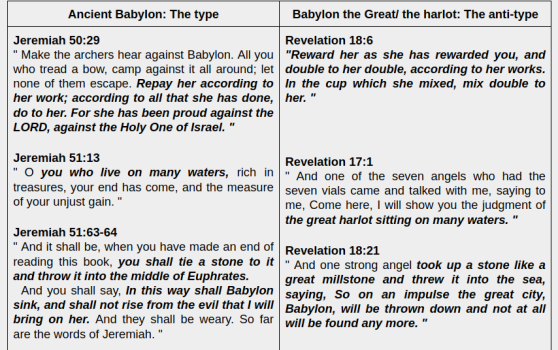covenantee
Well-Known Member
Historical fulfillments of Jesus' prophecies.In one of my previous posts I posted the first thing - the very first thing - Jesus spoke about after sitting down on the Mount of Olives in all three synoptic gospels - and I placed it side by side for you - which is the tribulation and the persecution that the living stones of the New Testament Temple were to experience in the days leading up to his return, because that was one of the two questions they had asked Him.
Most of what Jesus said to them after He sat down on the Mount of Olives had nothing to do with the temple in Jerusalem. He had spoken about its coming destruction before even arriving on the Mount of Olives, though in Luke 21:20-24 He did give them the sign by which they would know that the destruction of the temple in Jerusalem was about to take place, because that was one of the two questions they had asked Him.
Scripture interprets scripture, even though you may ignore it.
Jesus on the Mount of Olives telling His disciples about the tribulation and persecution the living stones of the New Testament Temple were to experience (the very first thing He talks about after sitting down on the Mount of Olives):
View attachment 36985
View attachment 36986
View attachment 36987
Clearly Jesus was not obsessed with the temple in Jerusalem during his Olivet Discourse. He gave His disciples a sign that they would be able to recognize when its destruction was imminent, because they asked Him for it, but that's all He said about it. The rest of the Olivet Discourse is about the above.
DECEIVERS
Matthew: “And Jesus answered and said unto them, Take heed that no man deceive you, For many shall come in my name saying, I am Christ, and shall deceive many” (24:4,5).
Mark: “And Jesus answering them began to say, Take heed lest any man deceive you; For many shall come in my name, saying, I am Christ, and shall deceive many” (13:5,6).
Luke: “And he said, Take heed that ye be not deceived; for many shall come in my name saying, I am Christ, and the time draweth near; go ye not therefore after them” (21:8).
We notice that all three accounts warn about deceivers. But Luke’s account explains WHEN these things would happen. Jesus Said: “And the time DRAWETH NEAR: go ye not therefore after them.” Jesus was not talking about something that would take place hundreds or thousands of years later. Jesus was warning his disciples about something that was drawing near in their time. This is plain.
Did such deceivers or false Christs arise and deceive many in those years before the destruction of Jerusalem? Yes.
According to Josephus, the noted Jewish historian, twelve years after our Saviour’s death, a certain impostor named Theudas persuaded a great multitude to follow him to the river Jordan which he claimed would divide for their passage. At the time of Felix (who is mentioned in the book of Acts), the country of the Jews was filled with impostors who Felix had put to death EVERY DAY — a statement which indicates that there were many of such in those days.
An Egyptian who “pretended to be a prophet” gathered 30,000 men, claiming that he would show “how, at his command, the walls of Jerusalem would fall down.”
Another deceiver was Simon, a sorcerer, who led people to believe he was the great power of God (See Acts 8). According to Irenaeus, Simon claimed to be the Son of God and creator of angels. Jerome says that he claimed to be the Word of God, the Almighty. Justin relates that he went to Rome and was acclaimed as a god by his magical powers.
Origen mentions a certain wonder-worker, Dositheus, who claimed he was the Christ foretold by Moses. Another deceiver in those days was Barchochebas who, according to Jerome, claimed to vomit flames. Bar-jesus is mentioned in Acts 13:6 as a sorcerer and false prophet.
These are examples of the deceivers of whom history says there were a great number, and of whom Jesus had prophesied that there would be “many.”
Great Prophecies of the Bible
Ralph Woodrow
Last edited:




